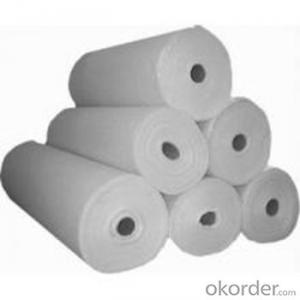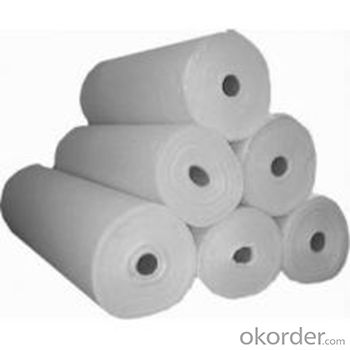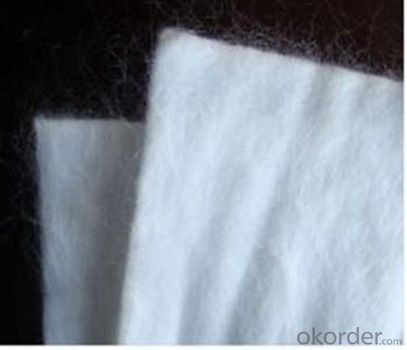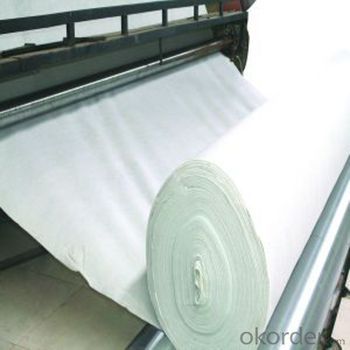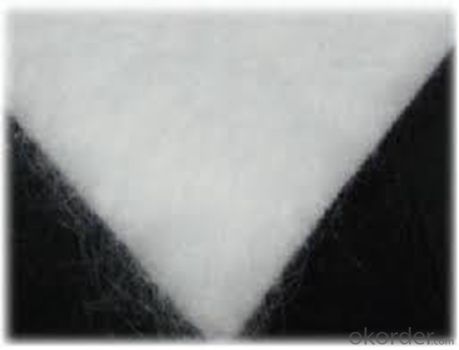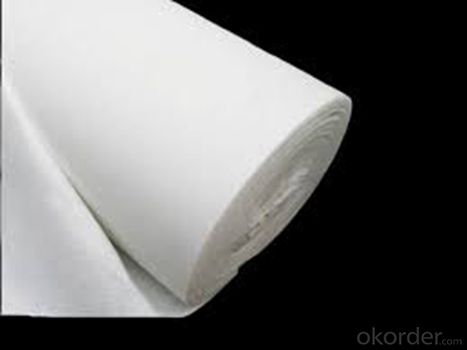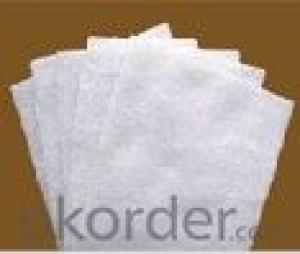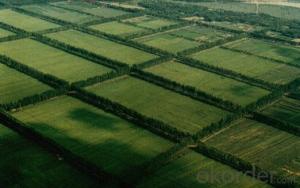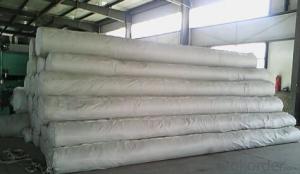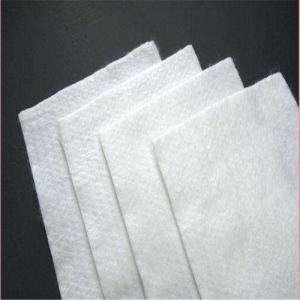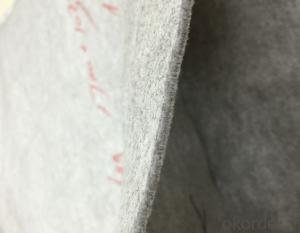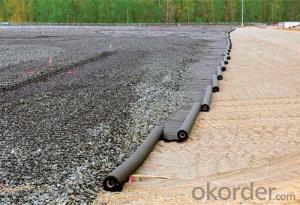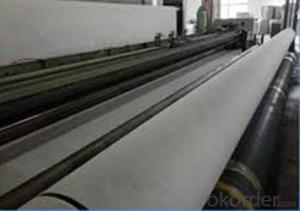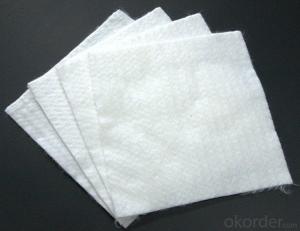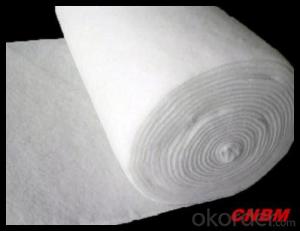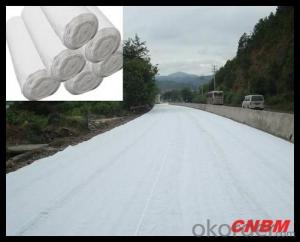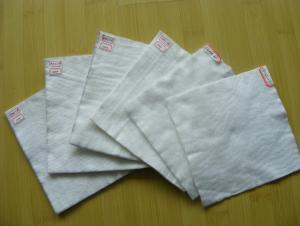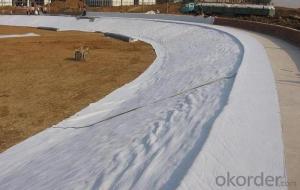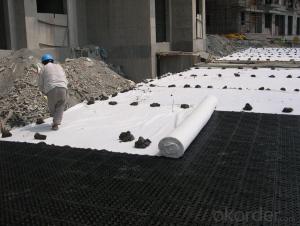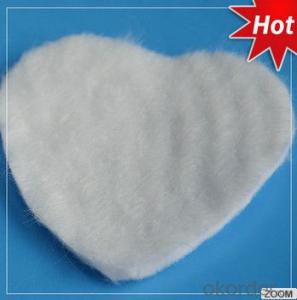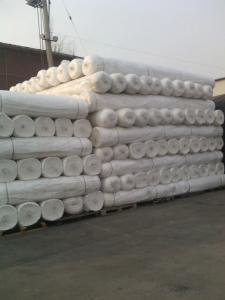Sac High Strength Polyester & Polypropylene Short Nonwoven Geotextile
- Loading Port:
- China main port
- Payment Terms:
- TT OR LC
- Min Order Qty:
- 3000 m²
- Supply Capability:
- 100000 m²/month
OKorder Service Pledge
OKorder Financial Service
You Might Also Like
Specification
Product Introduction
The needle-punched non woven geotextile is produced from polyester or polypropylene fiber by differentequipment and technology to get different thickness. The main function is filtration, drainage, reinforcement. It has good impermeability and resistance to deformation
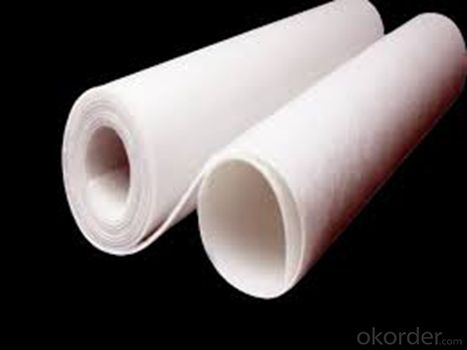
Packaging & Shipping
Packing: PLASTIC FILM INSIDE, AND WOVEN BAG OUTSIDE
Shipping: About 15 days after receipt the deposit
pecifications
geotextile fabric
permeability,filtration,easy for construction
ISO and CE certificate
Good quality and competitive price
Our Service
Quality assurance
1.On a regular basis or as per your request,we entrust national testing agencies to conduct quality inspections
2. Strictly in accordance with the ISO9001-2008 international quality system standard,we monitor and manage the whole process throughout production,quality testing,and measurement to ensure product quality
3. For quality-related construction delay or substandard construction(except for damage or losses due to customer’s responsibility or irresistible natural disasters),we have refunding,replacement,and repair services.We will respond to customers’ feedbacks on quality issues within 24 hours.
FAQ:
Q: What kind of payments does jenor support?
A: T/T, L/C, Cash are accepted.
Q: Do you charge for the samples?
A: Accordeing to our company policy, the samples are free, we only charge the freight fee. And we will return the freight fee during the next order.
Q: Can you produce according to customers' design?
A: Sure, we are professional manufacturer, OEM and ODM are both welcome.
Q: Do you have other products?
A: Yes, please check the pictures:
- Q: What is the difference between nonwovens and geotextiles? What is the difference between geotextiles and nonwovens?
- Geotextile is divided into two non-woven geotextile and woven geotextile, non-woven geotextile and acupuncture and spunlace, staple fiber and long fiber. Nonwovens means that the manufacturing process does not require weaving. Geotextiles are used for geotechnical engineering. Geotextile is part of the textile does not require the manufacture can be made, called non-woven geotextile. Non-woven fabrics can be used very broad, like we use the heart of the soft wipes, are non-woven, as well as the hotel put the shoes of the shoes, but also non-woven.
- Q: The amount of geotextile drained pipe drape
- According to the two sides agreed by the measurement method, such as by the extension of the package or the expansion of the area can be calculated, you can also agreed to package a tube how much money. Generally calculated by the expansion of the area is more reasonable, because the size of the pipeline.
- Q: How do geotextiles help with reinforcement of geosynthetic tubes?
- Geotextiles play a crucial role in the reinforcement of geosynthetic tubes by providing added strength and stability to the structure. They act as a barrier between the tube and the surrounding soil, preventing soil particles from infiltrating the tube and causing potential damage. Geotextiles also distribute loads evenly across the tube, reducing the risk of localized stress concentrations. By enhancing the overall stability and load-bearing capacity of the tube, geotextiles significantly contribute to the reinforcement and longevity of geosynthetic tubes in various engineering applications.
- Q: What are the materials used for spinning geotextiles?
- Spinning is made of synthetic fibers through acupuncture or weaving made of permeable geosynthetics. There are at least two sets of parallel yarns (or flat yarn), a group of looms along the loom (the direction of fabric travel) called warp yarns, another group The horizontal arrangement is called weft yarn.With the different weaving equipment and the process, the warp and the weft are woven together into a cloth, and can be knitted into different thickness and density according to different use range. Generally, the spinning and weaving cloth is thin and vertical Have a very strong tensile strength (longitude than latitude), with good stability. There are spinning geotextile according to the weaving process and the use of latitude and longitude is divided into reinforced geotextile and non-reinforced geotextile two categories, plus The tensile strength of the geotextile is much larger than that of the ordinary geotextile, and the general application of the geotextile is reinforced with the reinforcement of the geotextile project. The main function is reinforced by reinforcement and has the function of plane isolation and protection. Can be selected according to the specific purpose of use.
- Q: What are the specifications for geotextiles in retaining wall construction?
- The specifications for geotextiles in retaining wall construction typically include requirements such as the tensile strength, elongation, permeability, and durability of the material. The geotextiles should have sufficient strength to resist the forces exerted by the retained soil, as well as the ability to allow water to drain through the fabric. Additionally, they should be resistant to degradation from UV exposure, chemicals, and biological agents to ensure long-term performance in retaining wall applications.
- Q: What are the different geotextile performance properties?
- Some different geotextile performance properties include filtration, separation, drainage, reinforcement, and erosion control.
- Q: Can China produce polypropylene filament geotextiles? Google knows
- Yes, I am professional production, wish smooth
- Q: What are the key factors affecting the UV stability of geotextiles?
- The key factors affecting the UV stability of geotextiles include the polymer type, additives, and the thickness of the geotextile. The polymer type determines the inherent resistance of the geotextile to UV degradation. Additives such as UV stabilizers can enhance the UV resistance of the geotextile. Additionally, the thickness of the geotextile plays a role in its UV stability, as thicker geotextiles tend to provide better protection against UV rays.
- Q: How are geotextiles different from other types of geosynthetics?
- Geotextiles are a specific type of geosynthetic that are primarily used for separation, filtration, and drainage purposes in various civil engineering projects. Unlike other geosynthetics such as geogrids or geomembranes, geotextiles are made from woven or non-woven fabrics, which provide them with different physical properties and application capabilities. Geotextiles are generally more flexible, lightweight, and permeable, allowing for efficient water and gas flow while preventing soil erosion and promoting soil stabilization.
- Q: Can geotextiles be used in the protection of underground tanks?
- Yes, geotextiles can be used in the protection of underground tanks. Geotextiles are commonly used as a protective layer to prevent damage to underground tanks from surrounding soil movement or external pressure. They provide an effective barrier between the tank and the surrounding soil, reducing the risk of punctures, abrasions, and corrosion. Additionally, geotextiles can help with filtration and drainage, ensuring proper functioning and longevity of the underground tank.
Send your message to us
Sac High Strength Polyester & Polypropylene Short Nonwoven Geotextile
- Loading Port:
- China main port
- Payment Terms:
- TT OR LC
- Min Order Qty:
- 3000 m²
- Supply Capability:
- 100000 m²/month
OKorder Service Pledge
OKorder Financial Service
Similar products
Hot products
Hot Searches
Related keywords
